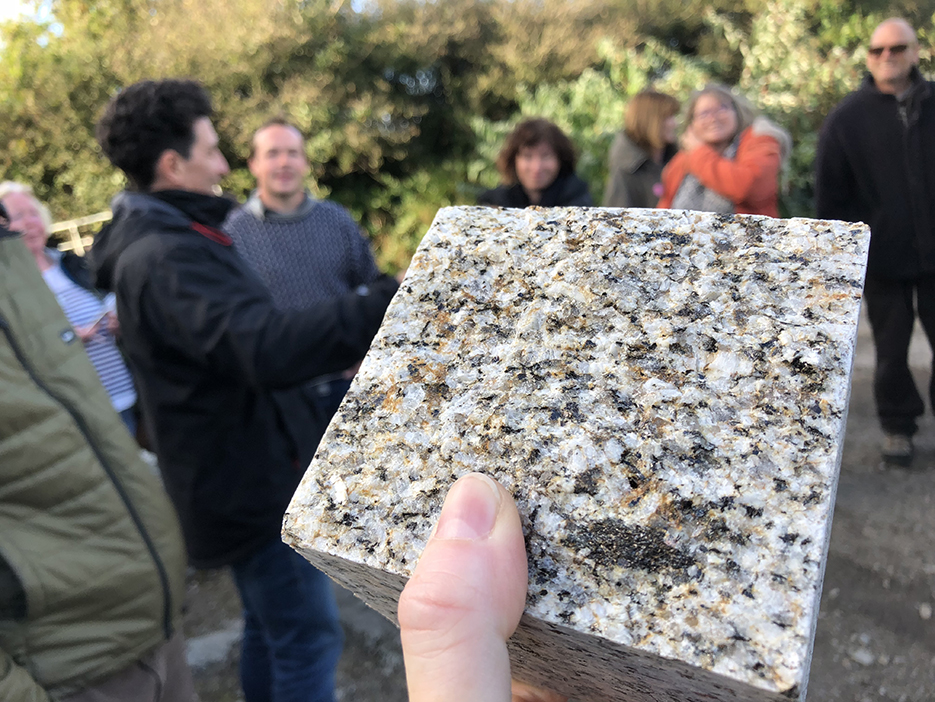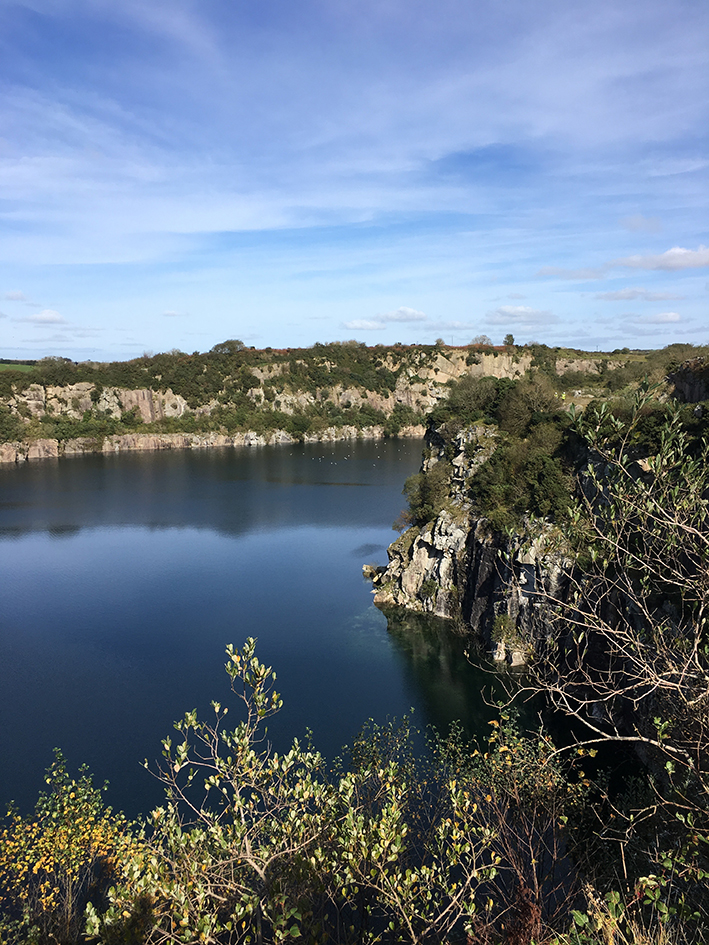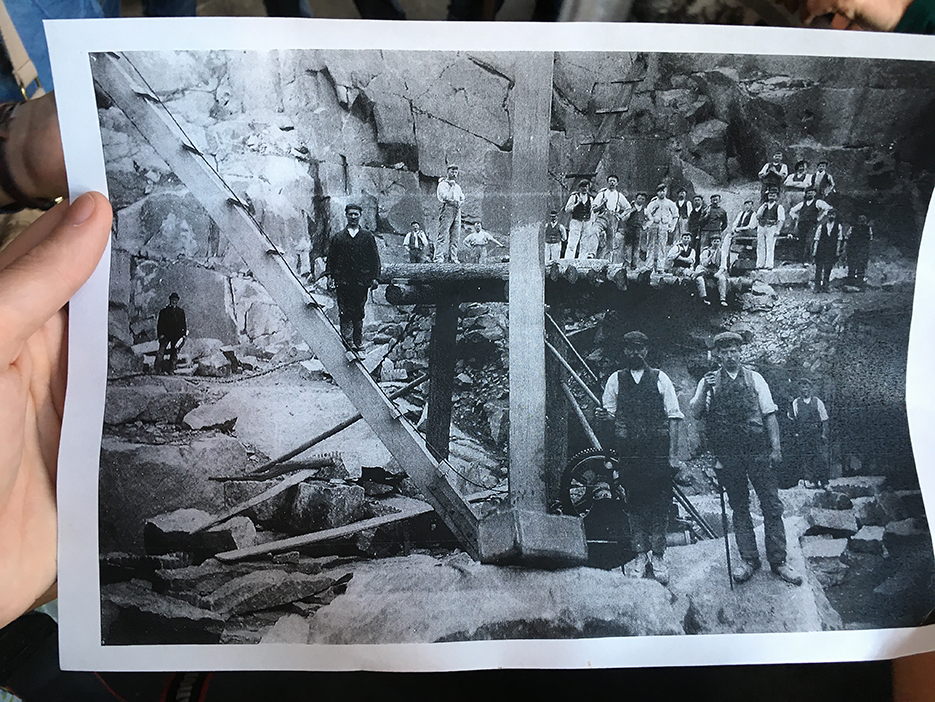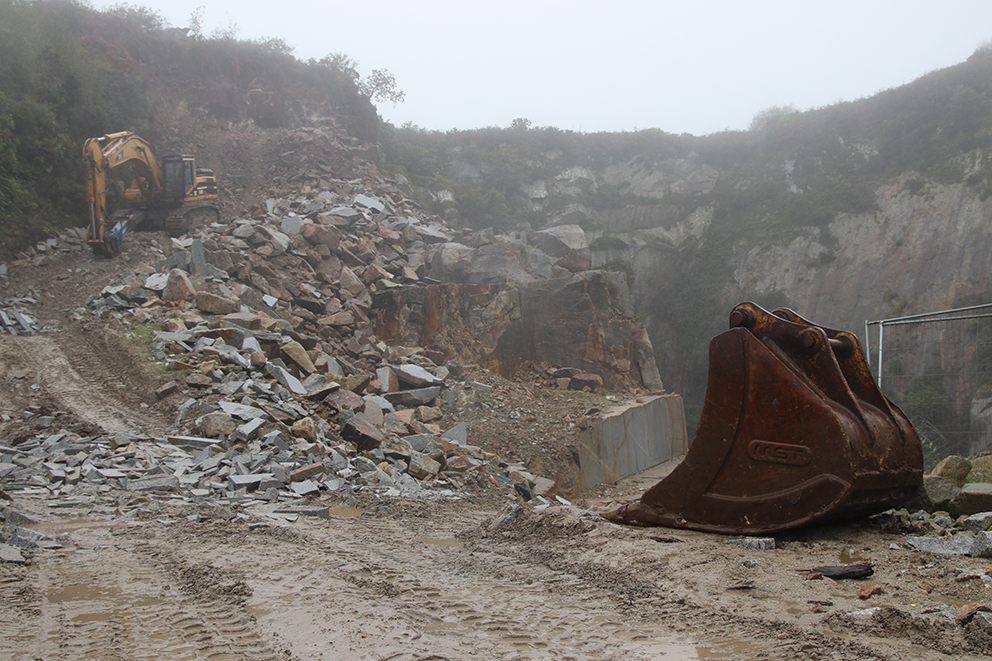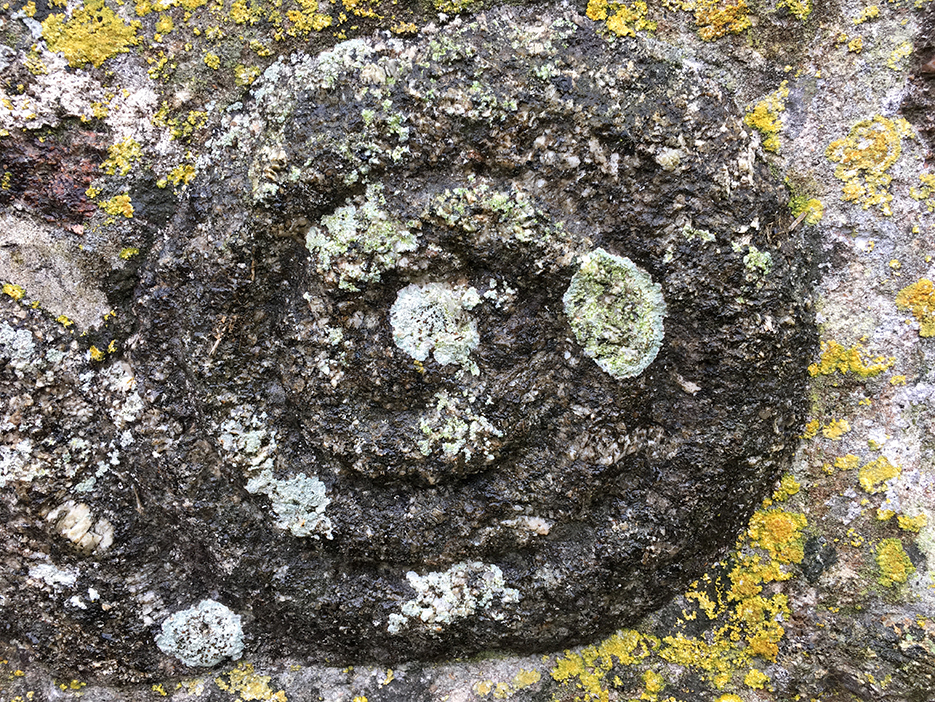
A slug inspects a stone
Image: courtesy Patrick Langley
It was during Ruth’s Siddall’s explanation of ‘the seven crystal systems’, that I realised something that should have been obvious from the start: stone is in constant motion. Ruth was explaining how the crystals form as their mineral liquids cool, interlocking, extending, enmeshing. I pictured a cyclical process, laid out like an illustration from a Dorling Kindersley guide to geology. Stone melts and morphs, erodes and drifts, crumbles and reforms. Magma tides entice tectonic plates into earth-quaking conflict. Elsewhere they wrench them apart, spilling guts of lava over the ocean floor, or spurting jets of arterial orange from volatile volcanoes. Stone crumbles to sediment, which layers in rocks, which slide, sink, melt afresh as tectonic pressures drown them in the bowels of the earth: change after change after change. Stone is locked into a restless, relentless cycle. It just happens to turn so slowly that humans, in the main, tend not to notice.
- Kerris
In the end, my favourite quarry was the very first one we visited. Relative to Tregarden or De Lank, Kerris was modest, a mere basin of a quarry whose stone would have been extracted by hand, with little use of explosives. Long disused and thoroughly overgrown, Kerris provided stones for the construction of nearby houses and the buildings for the farm owned by Geoffrey Giles. To get to it, Geoffrey led us down a skinny not-quite-pathway, scratchy with brambles and webbed with vines, the ground beneath us sodden with mud, the leaves emerald in the low-hanging mist. We ducked beneath branches, crossed a stream, and trekked single-file through the vegetal murk and the seeping richness of the wilderness. The setting was straight out of the second Fitt (or part) of the late-fourteenth century poem Sir Gawain and the Green Knight. In the poem, Sir Gawain, having travelled far and wide in search of the supernatural knight whose skin, hair, and clothing are as green as Britain’s lushest fields, arrives at a wild, untamed valley abundant with natural life. In Simon Armitage’s 2007 translation, Gawain descends into ‘a deep forest, densely overgrown’:
Hazel and hawthorn are interwoven,
decked and draped in damp, shaggy moss,
and bedraggled birds on bare, black branches
pipe pitifully into the piercing cold.
At Kerris, there weren’t any pitiful birds or sword-wielding, pagan demigods. But there was a sense, in my mind at least, that nature moved here at a ponderous, spellbound pace; that the air was charged or enchanted with dreamlike possibilities. In fact, when the branches retreated, the path opened up, and we finally saw the quarry itself, I felt I had been there already. As a kid, I sometimes dreamt about dark, unknowable bodies of water, wells, ponds, and pools into which I might fall and forget myself. Kerris was just like I’d seen in those dreams. Flooded with blackish water, it was surrounded by lichen-clad trees, moss-softened heaps of unused granite, rust-brown ferns, matted grasses, and wild flowers. Nearby, a crowd of pale green, delicate lily pads floated on the water’s surface. Their sunken stems hinted at inhuman secrets, alive and unknowable, just below the limit of our awareness. Awoken by the violence of quarrying, those depth-dwelling forces, whatever they were, had been concealed afresh, I felt, by the slumbering water. The quarry was profoundly silent. Except, that is, for the hushed, excited murmurs of the group – I seem to remember we spoke in soft voices, as though we had entered a church – and the crackle of rain on the leaves. Looking at the water, entranced by its aura of mystery, I pictured a great beast slumbering in its depths.

